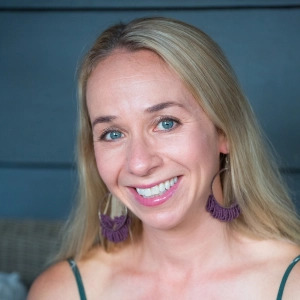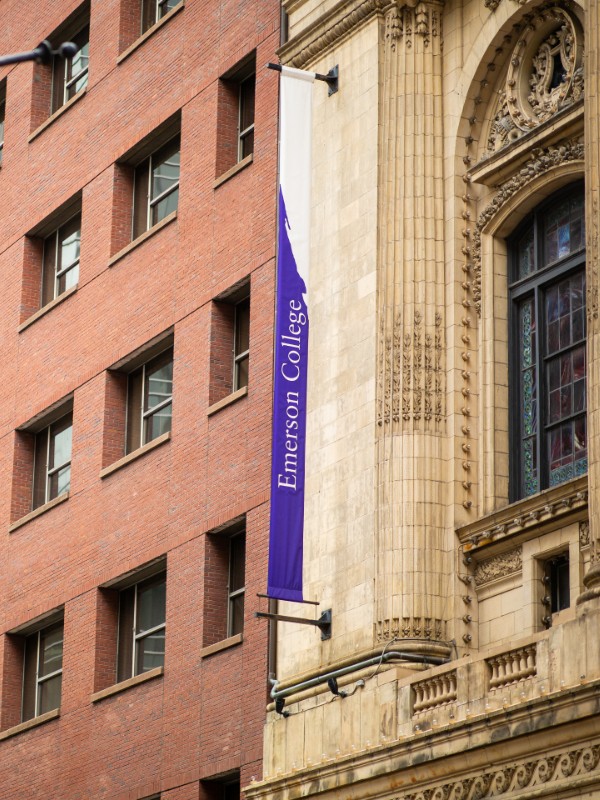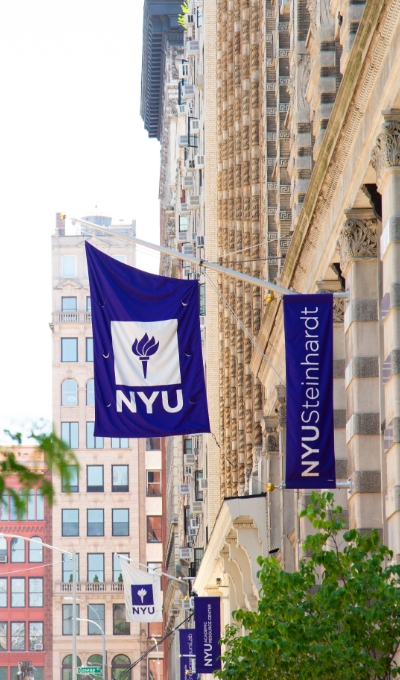Interview With Dr. Michelle Veyvoda of Iona College

Dr. Michelle Veyvoda is an Assistant Professor of speech-language pathology and audiology at Iona College in New Rochelle, NY. She received a Bachelor’s degree in Communication Sciences and Disorders from the University of Massachusetts at Amherst and a Master’s Degree in Speech-Language Pathology from Gallaudet University. Dr. Veyvoda works primarily with children who are deaf or hard of hearing. She has provided speech, language and auditory therapy to children who use sign language and spoken English and has worked in both total communication and auditory-oral environments. Dr. Veyvoda has published in the Journal of Deaf Studies and Deaf Education and has presented at the American Speech-Language-Hearing Association’s annual convention, the New York State Speech-Language-Hearing Association’s annual convention, the International Association for Research in Service-Learning and Civic Engagement’s annual conference, and the American Education Research Association’s annual meeting. She lives near New York City with her husband and two children.
Note: You should consult with your doctor or speech pathologist for recommendations on treatment. The views and opinions expressed in this article are those of Dr. Veyvoda and do not necessarily reflect the official policy or position of SpeechPathologyMastersPrograms.com
How did you become interested in researching the clinical preparedness of speech-language pathologists (SLPs) to work with deaf students?
This interest evolved over time. I went to a graduate program at Gallaudet University that emphasized work with the deaf and hard of hearing (DHH) population. A lot of our coursework and internships focused on that population. We took courses in American Sign Language, assistive listening technology, and several aural rehabilitation classes. Our clinical practicum experiences included DHH clients, and we had to do at least one internship with that population. After I graduated, I did my CFY at a school for the deaf in New York City. At that time, the population in schools for the deaf – at least in NYC – was rapidly changing. More DHH children were being mainstreamed, and the schools for the deaf were seeing higher representation of students with additional disabilities, students whose families had immigrated from other countries, students living in poverty, etc. The intersection of these factors created new challenges for the schools and professionals. Even with all of my previous training from Gallaudet, I had a steep learning curve. It made me wonder how those without previous training were adjusting to the demands of this specialization, and how they were acquiring their skill set. I felt fortunate that I had the background from my time at Gallaudet, and I wondered how the majority of SLPs who work with the DHH population – most of whom didn’t attend a specialized graduate program – learn to work with their clients. Fast-forward a few years, and I was in a Ph.D. program at Teachers College, Columbia University. My original intent when applying to the doctoral program in Deaf Education was to develop a comprehensive language evaluation tool for DHH children. I wanted to create something like the Clinical Evaluation of Language Fundamental (CELF), but for deaf children. I soon realized how difficult that would be, because the pediatric DHH is so incredibly diverse. But at the same time, which was right around the time of the recession in 2008/2009, a new political situation that hit very close to home emerged in New York State. Our governor proposed to redirect funds for state-funded schools for the deaf in an attempt to balance the budget. The funds would have been redirected to the local school districts, and there was a great deal of fear in the Deaf community that districts would choose to keep high-need deaf children in-district, rather than pay the high price tag to send those children to schools for the deaf, which are much more expensive per child. All of a sudden, it hit me – what will all these kids do without schools for the deaf? If they end up in public schools, do the SLPs who work at the district-level know how to work with them? And if not, how will they learn? With those questions, my dissertation was born.
Speech-Language-Hearing professional certification is subdivided into speech pathology and audiology, but the two areas share some overlap. What are some of the ways in which SLPs can be better prepared to serve patients with hearing issues?
There are SLPs out there who have both certifications, but that might not be as feasible as it once was now that the Audiology certification requires a four-year Au.D. I always tell my students “If you’ve met one deaf child, you’ve met one deaf child.” There is no training that will prepare students to meet the needs of the vast spectrum of DHH children. I tell my SLP students that if they want to work with DHH children, they should do several things: take as much coursework focused on that population as possible (sign language and/or cued speech classes, an aural rehabilitation class, etc.); pursue an internship opportunity with that population; and seek out a clinical fellowship year opportunity in a setting that serves the DHH population. And then I tell them they need to commit to lifelong learning. The technology they’ll learn about in graduate school will be almost obsolete five years down the road. They need to keep up with the technology on their own as professionals. There are a handful of graduate programs in the country that have specialization tracks for aural rehabilitation, cochlear implants, etc. Students should look into those when applying to graduate schools. At my institution, we recently applied for a federal grant to create a specialty program focused on early language acquisition in DHH children. Even if we don’t get the grant, we still plan to create a version of this program. As awareness of the importance of early language development for DHH children increases, some graduate programs are rising to the challenge and providing additional relevant educational and clinical experiences.
What are the challenges to ensuring that SLP students get the education they need to serve this population?
This is such an interesting and important question. Clearly the skills training and practical experiences that prepare our future professionals are essential for them to become strong service providers. One such skill that may be challenging for pre-professionals to develop is parent coaching. In early intervention with DHH children, the ideal service delivery model is for the parent to be involved in every session, and for the parent to be the child’s primary language teacher – not the SLP. In order to get to this point, however, parents of DHH children require a lot of coaching from their child’s clinician. This is a really important skill for pre-professionals to develop, but one that may be hard to find opportunities to develop in typical graduate-level clinical experiences. However, I’d like to point out one area of education that I think needs attention, and it’s that students receive dramatically different messages about communication modality and language acquisition, depending on who trains them. The history of deaf education has been quite polarized, with a lot of disagreement on how deaf children should be raised, communicated with and educated. A lot of this disagreement relates to language acquisition and the “competing” modalities of spoken language vs. sign language. In my opinion, these modalities do not have to be competing. We have the technology now to give the most profoundly deaf children full access to speech sounds. These children can learn spoken language and sign language, if their parents choose that for them. The deaf education system in Sweden offers a terrific example of the possibilities of bilingual-bimodal development for deaf children. But for some reason, in the U.S. parents of young deaf children are still erroneously led to believe that signing with their deaf child will somehow stifle their child’s spoken language development. They are told to only speak with their deaf child – even if their deaf child has no access to speech sounds. And it’s important to remember that many deaf children who need cochlear implants to obtain that access to speech sounds don’t receive that technology until after their first birthday. That’s a full year of language deprivation for a child whose parents were counseled by their caregiving team (which includes an SLP) not to use sign language. That’s a third of the way through the critical period of language development. We would never deprive a hearing child of complete, high-quality and high-quantity access to language in their first year of life. Why do we do this to deaf children? And even once implanted, some deaf children don’t receive enough benefit from their cochlear implants to fully become spoken language communicators and learners. Granted, many deaf children who use hearing aids and cochlear implants are tremendously successful spoken language users. But unfortunately, there is a lot of misinformation and even fear around signing with deaf children – even just as a support or bridge to spoken language. Lately, a lot of neurolinguistics research is pointing out the damage language deprivation can cause, while also illuminating the capacity of a child’s brain to learn both spoken and signed languages. We see that a large percentage of deaf children have additional disabilities, including cognitive disabilities. But cognitive disabilities – including difficulties with working memory and executive functioning – are also associated with language deprivation. So who’s to say that by depriving a deaf child of language, we’re not causing some of these cognitive difficulties that emerge down the road? There is just too much that we don’t yet know about the dangers of language deprivation, and I don’t believe sign language (or another form of visual communication, like cued speech) should be removed from the equation so early in a child’s life. I know I’m standing on a “soap box” right now, but I have seen too many children go the first two and even three years of their lives without consistent and accessible language, and there is no rationale for that. So if I had to choose the biggest challenge in educating future professionals, it would be that academic programs need to acknowledge and overcome their biases and train their SLP students to provide unbiased and evidence-based information to the families of deaf children.
Your thesis looked at the attitudes of deaf parents on speech services for their deaf children. What did you learn and how do these attitudes influence outcomes for children?
Yes, well, this goes back to what I said before about no two deaf individuals necessarily being alike. The Deaf community is not a monolith. I was kind of taught to believe that it was, early on in my education. I remember hearing “The Deaf community hates cochlear implants” or “Deaf people hate speech.” Even now, 16 years later, I have students in my classes asking, “Don’t Deaf people disagree with cochlear implants?” In graduate school, we had deaf children from the community come to our clinic for speech therapy. We called it “communication therapy” to account for those who didn’t communicate through speech. I remember these deaf children coming in for therapy with their Deaf parents, and I thought “These parents can’t be so opposed to speech if they’re bringing their children here.” So I thought it would be interesting to interview them on their attitudes toward these services for their deaf children. And I found that the parents had mostly positive perspectives toward speech and language services for their deaf children. There were some factors related to their personal experiences that colored their perspectives, but the majority valued spoken language to some degree.
How do you choose new research topics to pursue?
My master’s thesis and doctoral dissertation both emerged naturally, largely based upon the settings I was in at the time – first at Gallaudet, and then in New York during the funding crisis. I’m now working in an academic setting and I’m fortunate to have colleagues who are interested in similar fields, so we find that new topics for research tend to develop organically. One such example is with a colleague of mine who is a professor of dance, who wanted to explore the role that dance and movement could play in literacy development of deaf children. So we partnered with another colleague, who also has a deaf education background, and explored this through a partnership with a school for the deaf. I find the spirit of collaboration at my institution to be tremendously helpful for developing a robust, interdisciplinary research agenda.
What aspect of your research are you most proud of?
I’m not sure that “proud” is the right term, but what I find most gratifying about conducting research is the ability to collaborate with an interdisciplinary team. I conducted a qualitative study on the attitudes of Deaf Education graduate students toward communication modes for deaf students last summer with two colleagues. The three of us come from a deaf education background, but each from a different perspective: I’m the SLP, with a strong knowledge about and focus on spoken language, my colleague Jenn is a teacher of the deaf with a strong interest in cued speech, and my colleague Amanda is a teacher of the deaf, but also a linguist and a strong supporter of ASL-English bilingual-bimodal development for deaf children. We had this epiphany during the data analysis stage. We noticed that we each were interpreting the descriptive data slightly differently, and after some discussions we realized it was because we were each approaching it from a slightly different perspective. Isn’t that amazing? Three researchers who graduated from the same Ph.D. program, who have the same overall philosophy on deaf education and language development, but just the slight variations in our areas of expertise really influenced our interpretation of data. It humbled us and became a focus of a paper we eventually presented at the American Education Research Association’s annual conference in April. It just demonstrates how essential it is to collaborate on research. We should not be approaching research from our own silos. We need to work together, and I’m very content that I have that opportunity.
What do you know now that you wish you had known as a speech pathology student?
I don’t think I was aware of the importance of advocacy when I was a student. I was very focused on exams and writing perfect Subjective, Objective, Assessment and Plan (SOAP) notes and designing a therapy activity that would impress my supervisor. All of that is important. But I missed the opportunity to learn real advocacy skills – both for myself, to advocate for my clients – and to teach my clients to advocate for themselves and their families. Our country is in a different place than it was when I was in graduate school. Our healthcare system has changed, and there is confusion and fear around that. There are families who may be undocumented, whose children are on our caseloads in schools but whose parents fear deportation should they attend school events. And we have to advocate for changes in public policy that impact our clients as well as our profession. I think that advocacy requires compassion, confidence, maturity and awareness, and it takes time to really develop the skill. I hope graduate students now can seek out some support in that area, because it is truly an essential component of the client-clinician relationship.
Sponsored online speech pathology programs

Online MS: Pursue SLP Certification. Study FT/PT
Speech@Emerson enables you to earn an MS online and pursue SLP certification in as few as 20 mos. Learn the same curriculum as the on-campus program. Study FT or PT.
- Prepares you to pursue certification as an SLP generalist
- In-person clinical placements at faculty-approved partner sites
- As few as 20 months to complete
SPONSORED

Want to Become an SLP? Earn an MS Online at NYU
NYU Steinhardt’s online master of science program in Communicative Sciences and Disorders prepares aspiring speech-language pathologists with a comprehensive professional education.
- Prepares students to pursue SLP licensure
- Accredited by ASHA’s Council on Academic Accreditation
- As few as six terms to complete
- Full-time and part-time plans of study
SPONSORED

